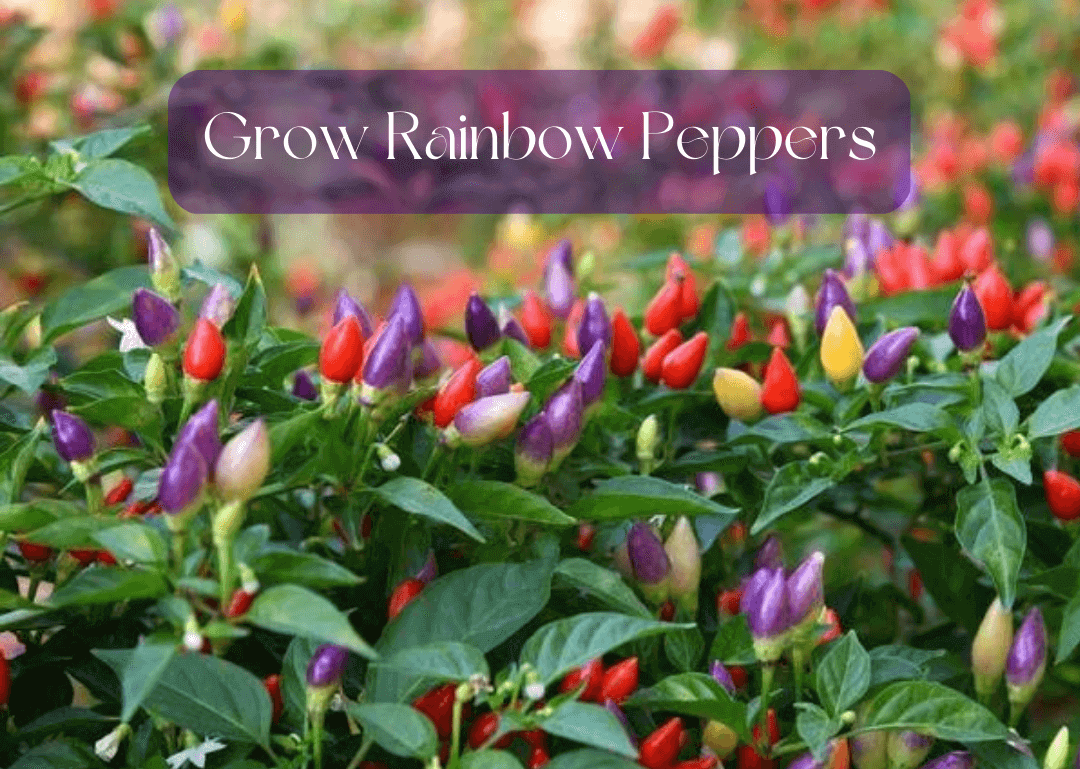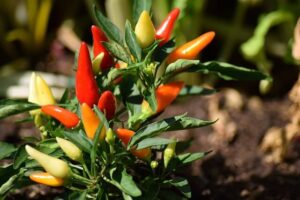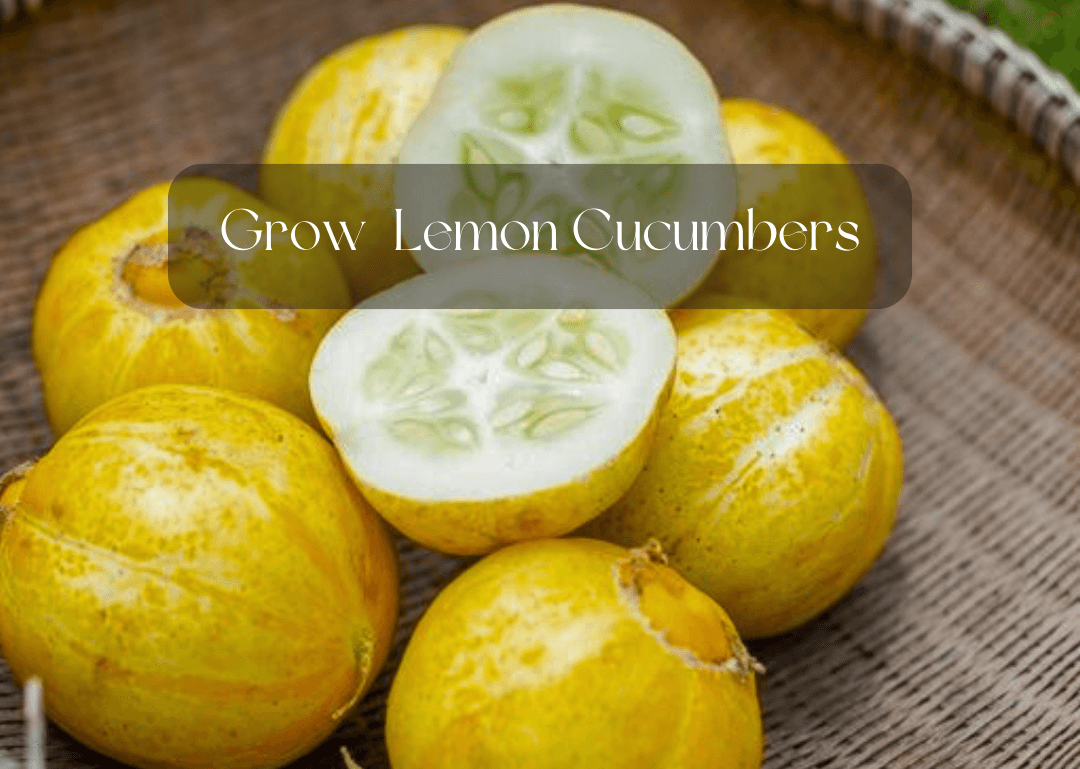
How to Grow Rainbow Peppers Indoors? 9 Steps
Rainbow chili peppers are a true feast for the eyes! These colorful and vibrant peppers come in a kaleidoscope of hues, ranging from fiery reds and oranges to cheerful yellows and soothing greens. But can you grow Rainbow Peppers indoors? Of course, even they can be a colorful and delicious addition to your indoor kitchen garden. Not only do these peppers add a burst of vibrant hues to your meals, but they also pack a punch of sweet and tangy flavors.
In this blog post, we will cover everything you should know to grow rainbow peppers indoors, including the necessary conditions, care requirements, and harvesting tips. We’ll also answer some commonly asked questions, such as whether or not these peppers are safe to eat and how to incorporate them into your favorite recipes. So let’s get started!
How Do You Grow Rainbow Peppers?
It is relatively easy and straightforward to grow rainbow peppers indoors. These plants require well-draining soil, ample sunlight, and consistent watering. Rainbow peppers can be started from seeds or propagated from cuttings, and they grow best in warm, humid conditions.
With proper care and attention, these colorful peppers will thrive and produce a bountiful harvest. In the following sections, we’ll explore the necessary steps for growing rainbow peppers, including how to plant them, care for them, and harvest them.

How to Grow Rainbow Peppers Indoors? Step-by-Step Guide
Growing rainbow peppers indoors is a fun and rewarding activity that can yield a delicious and colorful harvest. Follow these simple steps to easily grow rainbow peppers indoors:
Step 1: Choose a Pot or Container
Select a pot/container with good drainage holes that is big enough to accommodate the mature size of the rainbow pepper plant. A 10 to 12-inch pot is suitable for growing one plant. Clay or terracotta pots are ideal as they allow for good airflow and drainage. However, plastic or ceramic pots can also be used as long as they have drainage holes. Consider where you’ll be placing the pot. Don’t place it in direct sunlight all day as this can scorch the leaves.
Step 2: Choose the Best Soil for Rainbow Chilli
Use a well-draining potting mix that’s rich in nutrients. Mix in some perlite or sand to improve drainage. Choose a soil mix that’s rich in nutrients. Look for a potting mix that contains a balanced blend of macronutrients like nitrogen, phosphorus, and potassium, as well as micronutrients like calcium, magnesium, and iron. Rainbow chili peppers prefer slightly acidic soil with a pH range between 6.0-6.8.
You can also mix in some perlite, sand, or vermiculite to improve the soil drainage. Choose a soil mix that’s light and fluffy, because soil that’s too heavy or dense can compact easily and prevent proper root growth. Look for a potting mix that contains organic matter like compost or worm castings. Organic matter helps to retain moisture and nutrients in the soil, promoting healthy plant growth. Click here to learn about composting at home.
Step 3: How to Sow the Rainbow Chilli Seeds
Fill the pot or container with a well-draining potting mix, leaving about an inch of space below the rim. Water the soil gently until it’s evenly moist but not saturated. Sow the rainbow chili seeds about 1/4 inch deep into the soil, spacing them about 2 to 3 inches apart. Then simply cover the seeds with a thin layer of soil.
Water the seeds gently, taking care not to displace them. Cover the container with plastic wrap or a clear plastic dome to create a mini greenhouse to maintain humidity and warmth, promoting germination. Once the seeds have germinated, remove the plastic cover and move the pot to a sunny location. Rainbow pepper seeds will usually take 7-14 days to germinate.
Step 4: Provide the Rainbow Pepper Plant with Sunlight and Water
To grow rainbow peppers indoors, you need to provide them with plenty of sunlight, so it’s essential to place your plants in a bright, sunny location. Ideally, they should get at least 6 to 8 hours of sunlight per day. Try placing them near a south-facing window or use grow lights to supplement natural light.
How about watering? Rainbow peppers need regular watering to keep the soil evenly moist. Don’t overwater. Water your plants when the soil feels dry to the touch, but avoid letting the soil dry out completely. Be sure to water the soil directly and avoid getting water on the leaves, as this can promote fungal growth.

Step 5: Fertilize Your Rainbow Pepper Plant
Start fertilizing your rainbow pepper plants 2 to 3 weeks after transplanting them to their final container or after they’ve sprouted their second set of leaves. Make sure you fertilize them once every 2 weeks (15 days) throughout the growing season. You can use a balanced, water-soluble fertilizer that contains equal amounts of nitrogen, phosphorus, and potassium.
Mix the fertilizer with water according to the manufacturer’s instructions, and water the soil around the base of the plant, being careful not to get the fertilizer on the leaves. Alternatively, you can use a slow-release fertilizer that will gradually release nutrients over time. If you prefer to use organic fertilizers, you can use compost or worm castings instead.
Step 6: Prune Your Rainbow Pepper Plants
Look for stems that are crossing or rubbing against each other, as well as any dead, damaged, or diseased stems. These should be removed to prevent them from taking nutrients away from the healthy parts of the plant. Make sure you use a sharp, clean scissor or a pruning shear. The tools should be clean to avoid damaging the plant or spreading disease. You can sterilize your tools by wiping them with rubbing alcohol or a solution of one part bleach to nine parts water.
Step 7: How to Prune the Rainbow Pepper Plant
When pruning, make a clean cut just above a leaf node, which is the point where a leaf joins the stem. This will encourage the plant to produce new growth. Avoid removing more than 1/3 of the plant’s foliage at once, as this can stress the plant and reduce its yield. Instead, prune selectively throughout the growing season.
As your rainbow pepper plant grows, you may want to remove the lower leaves to improve air circulation and prevent disease. This will also encourage the plant to focus its energy on producing fruit rather than foliage.
Step 8: Control Pests and Diseases to Grow Rainbow Peppers Successfully
Rainbow pepper plants can be vulnerable to a range of pests and diseases, so it’s essential to monitor your plants regularly and take action if you notice any problems. We have listed some common pests and diseases that can affect your rainbow pepper plants, along with tips for preventing and treating them:
Early blight: It is a common fungal disease that can affect rainbow pepper plants, as well as other members of the nightshade family, such as tomatoes and eggplants. We have described preventing and treating early blight in your rainbow pepper plants below:
Symptoms:
- Brown or black spots on the lower leaves of the plant
- Yellowing and wilting of affected leaves
- Reduced growth and yield of the rainbow chili plant
Prevention:
- Choose disease-resistant varieties of rainbow pepper plants
- Rotate crops each year, planting peppers in a different location
- Avoid overhead watering, which can splash the fungal spores from the soil onto the leaves
- Remove and destroy any infected plant material as soon as you notice it
Treatment:
- Remove and destroy any infected plant material
- Apply a fungicide to the plant according to the manufacturer’s instructions
- Prune the plant to improve air circulation and prevent the spread of the disease
- Apply a layer of mulch to prevent the fungal spores from splashing onto the leaves
By taking steps to prevent and treat early blight in your rainbow pepper plants, you can help to ensure healthy growth and a bountiful harvest of colorful, flavorful peppers.
Tag: Grow Rainbow Peppers Indoors
Here are some more pests and diseases that you may notice:
- Aphids: These tiny insects can suck the sap from the leaves and stems of your plants, causing them to wilt and deform. To prevent aphids, keep your plants well-watered and avoid over-fertilizing. As soon as you notice aphids on your rainbow pepper plants, you can spray them with a solution of water and dish soap or use an insecticidal soap.
- Spider mites: These tiny pests can spin webs and feed on the undersides of leaves, causing them to turn yellow and die. To prevent spider mites, keep your plants well-watered and avoid over-fertilizing.
- Powdery mildew: This fungal disease can cause a white, powdery coating to appear on the leaves and stems of your plants, reducing their growth and yield. To prevent powdery mildew, avoid overhead watering and provide good air circulation around your plants. Spray them with a solution of baking soda and water or use a fungicide if you notice them on the plant.
- Blossom end rot: This condition can cause the bottoms of the fruit to turn black and mushy, making them inedible. To prevent blossom end rot, keep your plants well-watered and avoid over-fertilizing. As soon as you notice blossom end rot on your plants, you can add calcium to the soil or use a calcium spray.
By monitoring your rainbow pepper plants regularly and taking action at the first sign of pests or diseases, you can help to ensure healthy growth and a bountiful harvest of colorful, flavorful peppers.
Step 9: Harvest Your Rainbow Peppers
You can harvest your first rainbow peppers in 90 to 140 days. Pick the peppers when they’re fully mature and have reached their full color. Use a sharp knife or scissors to cut the peppers from the plant. By following all these 9 steps, you can easily grow your own rainbow peppers indoors and enjoy a bountiful harvest of colorful and delicious peppers.
Now You Can Successfully Grow Rainbow Peppers Indoors
By following the 9 steps described above, you can ensure that your rainbow pepper plants receive the proper care and attention they need to thrive and produce a bountiful harvest of colorful, flavorful peppers.
Remember to choose the right container and soil, provide your plants with adequate sunlight and water, fertilize and prune them as needed, and watch out for pests and diseases. With a little patience and care, you can enjoy a beautiful and delicious crop of rainbow peppers right from the comfort of your own home.
So why not give it a try? Growing rainbow peppers indoors can be a great way to add some color and flavor to your home-grown cuisine, and it’s also a fun and rewarding hobby that the whole family can enjoy. Happy Gardening!
Tag: Grow Rainbow Peppers Indoors


